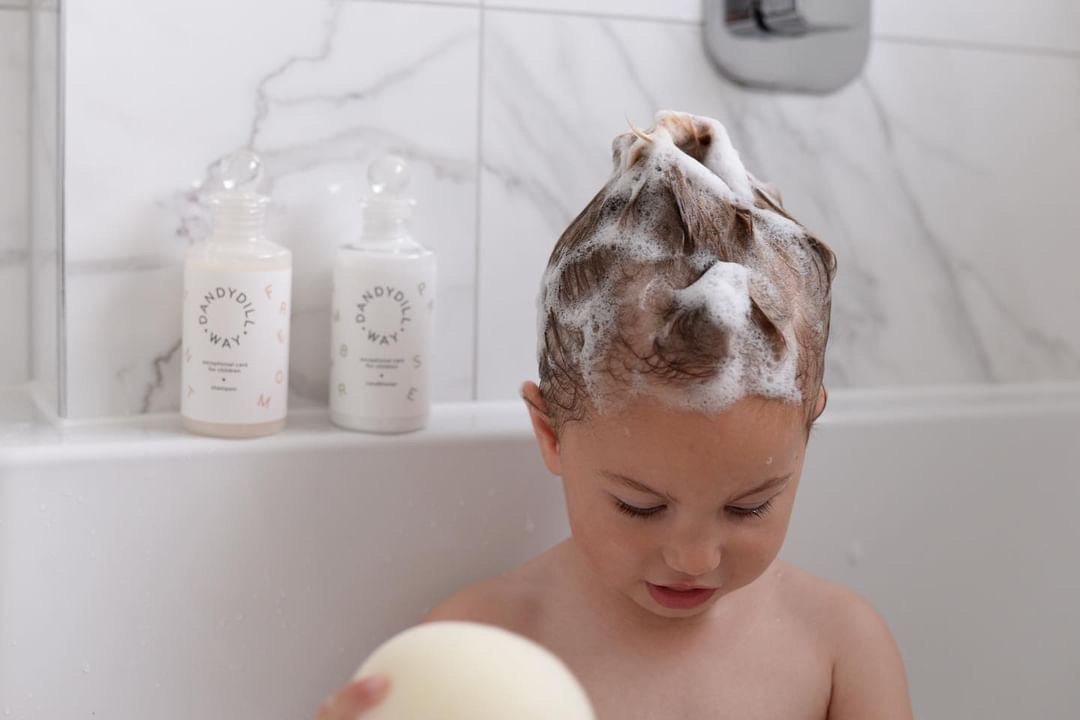
How to Make Bath Time Fun: Expert Tips for Parents Struggling with Bath Time Battles
Share
If your child is less than thrilled about bath time, you’re not alone. For many parents, bath time can feel like a daily struggle—whether it’s tears, tantrums, or outright refusal, getting your little one settled and happy in the tub can feel like an impossible task. But here’s the good news: it doesn’t have to be that way.
Bath time is an important daily ritual, not just for hygiene, but also for bonding, relaxation, and developmental growth. If you’re having a hard time getting your child to enjoy their bath, there are strategies you can employ to turn a stressful event you have to endure into a positive and even fun experience for you both.
Here are some parenting tips to help transform bath time into a happy and stress-free part of your child’s daily routine.
1. Make It Playful and Engaging
One of the most effective ways to shift your child’s mindset about bath time is to make it fun. Kids are natural explorers, and a bath can become a sensory playground. Turning bath time into an interactive experience can help distract them from any anxieties and keep them entertained.
Use Bath Toys: Invest in fun, water-safe toys like squirt guns, floating animals, or even foam letters to engage your child during the bath. You can also use cups, spoons, or small plastic containers to make "pouring" and "splashing" games. Invest in some new, exciting bath toys that are only used during bath time to keep the novelty alive and spark your child’s interest.
Create Fun Bath-Time Challenges: Turn bath time into a mini adventure, such as pretending the water is an ocean filled with sea creatures, or making up a story where your child is a “bath-time hero” washing away dirt or making bubbles.
2. Establish a Relaxing Routine
If your child resists bath time it may be that they are anticipating and amplifying a parent or caregiver's stress. Try to reframe bath time in your own mind by establishing a calming pre-bath routine to help ease any anxiety. This will make your child feel more relaxed and is especially important for younger children or toddlers who may have heightened sensitivities to sensory input like water temperature, sound, and sensation.
Try Calming Natural Scents: Essential oils like lavender or chamomile can trigger sensitivity so choose a gentle, allergen-free bubble bath to create a soothing atmosphere.
Create a Daily Schedule: Establish a consistent time and routine for bath time each day, so your child knows what to expect. A regular routine can bring a sense of security, making you both feel more comfortable with the process.
Dim the Lights: If you’re bathing your child at night, dimming the lights or using soft, ambient (bathroom safe!) lighting can help create a more relaxing, spa-like environment that helps to signal that it’s time to unwind.
3. Let Them Have Some Control
One of the main reasons children resist bath time is a lack of control. As young kids are still learning about their autonomy, they often resist anything that feels like an imposition. Giving your child some say in the bath process can make them feel more empowered and help reduce resistance. A pump dispenser for bubble bath will ensure that no bubbles will go to waste!
Let Them Choose Their Bath Toys: Allow your child to pick out the bath toys they want to use that day and let them lead the games you play together. This gives them an added sense of control over the process.
Allow Them to Adjust Water Temperature : Let your child test the water with their hands (ALWAYS test first) then ask them to help you adjust the temperature to their liking. Feeling like they’re a part of the decision-making process can give them a sense of responsibility and autonomy.
Make Them Your “Helper”: For toddlers, letting them “help” with tasks like turning on the tap, pouring water over themselves, or washing their own legs can make the experience more enjoyable.
4. Incorporate Bath Time into a Positive Routine.
A successful bath time routine doesn’t just happen in isolation; it’s part of a bigger, positive evening routine. If bath time is seen as a precursor to something enjoyable, like reading their favourite bedtime story or snuggling up for a long cuddle in a soft towel afterwards, your child might be more willing to embrace it.
Rewards for Cooperation: If your child has particularly strong resistance to bath time, consider using a reward system. Praise them for taking a bath or staying calm during the process. Over time, this positive reinforcement will help them associate bath time with feeling proud or happy.
5. Model Bath Time as a Positive Experience
Children are keen observers and often mimic their parents' attitudes and behaviours. If your child sees you enjoying the bath or showing excitement about it, they may be more likely to develop a positive attitude as well. Singing loudly in the shower can be very liberating!
Show Enthusiasm: Be excited about their bath time yourself. If you’re upbeat and positive, your child is more likely to pick up on that energy. Use a playful tone and make a big deal about how fun and relaxing bath time is.
Lead by Example: If your child is particularly apprehensive, show them that bath time is safe and enjoyable by making it a shared experience. Let them watch you take a shower or bath (if age-appropriate), or talk them through the steps of how you enjoy bathing.
6. Be Patient and Consistent
If your child has a strong aversion to baths, it may take time for them to adjust. Some children have sensory sensitivities that make the experience overwhelming, while others may simply be more reluctant to sit still in the water. Be patient and remember that persistence is key.
Start Slowly: If your child is particularly resistant, consider gradually easing them into immersion in the bath. Start with a quick rinse or a partial bath (perhaps just washing their feet and knees) and slowly increase the time and depth as they become more comfortable.
Praise Small Wins: Even if your child doesn’t start to love bath time right away, celebrate any positive moments. Whether it’s sitting in the water for a few seconds or rinsing their hair without fuss, recognise their progress with positive reinforcement.
7. Follow the same pattern with washing hair
And remember you shouldn't need to shampoo young children's hair more than once a week. Unless they have been extra messy, a rinse with clean water in-between washing will help them get used to the sensation of water on their face.
Take a little extra time and a deep breath to make bathing your little one a positive, enjoyable experience!
Getting your child to love bath time might not happen overnight, but with patience, creativity, and a little flexibility, it can become an enjoyable experience for both of you. By making bath time playful, giving them a sense of control, and incorporating bathing into a positive routine, you can transform it from a battle to a bonding experience.
Every child is different, and what works for one may not work for another. Keep tweaking your approach until you find what works for your family. Once you find the tricks that work then consistency, reassurance, and a sense of anticipation can help your little one learn to look forward to this important daily ritual.
